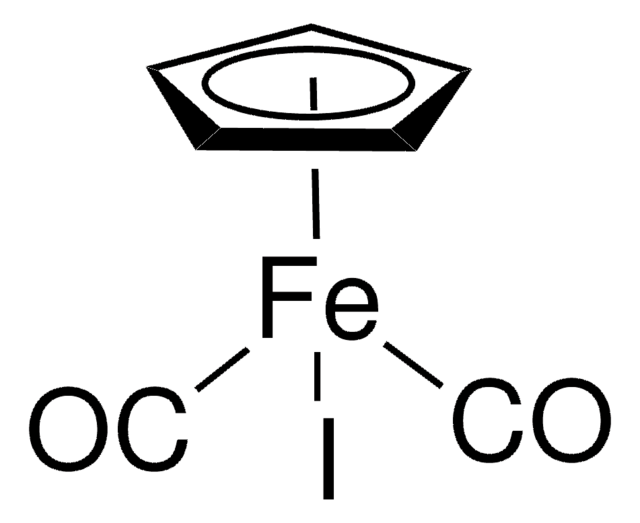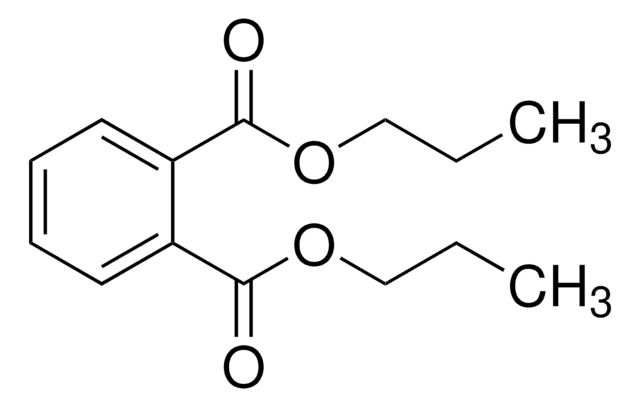290602
Dipropyl phthalate
98%
Synonym(s):
Di-n-Propyl phthalate, Dipropyl benzene-1,2-dicarboxylate
Sign Into View Organizational & Contract Pricing
All Photos(2)
About This Item
Linear Formula:
C6H4-1,2-(CO2CH2CH2CH3)2
CAS Number:
Molecular Weight:
250.29
Beilstein:
2332522
EC Number:
MDL number:
UNSPSC Code:
12352100
PubChem Substance ID:
NACRES:
NA.22
Recommended Products
Assay
98%
refractive index
n20/D 1.497 (lit.)
bp
317.5 °C (lit.)
density
1.078 g/mL at 25 °C (lit.)
functional group
ester
SMILES string
CCCOC(=O)c1ccccc1C(=O)OCCC
InChI
1S/C14H18O4/c1-3-9-17-13(15)11-7-5-6-8-12(11)14(16)18-10-4-2/h5-8H,3-4,9-10H2,1-2H3
InChI key
MQHNKCZKNAJROC-UHFFFAOYSA-N
Looking for similar products? Visit Product Comparison Guide
General description
Degradation of dipropyl phthalate by lypolytic enzymes (fungal cutinase, yeast esterase) has been investigated.
Dipropyl phthalate, also known as Dipropyl benzene-1,2-dicarboxylate, is an organic compound often used as a solvent and plasticizers.
Signal Word
Warning
Hazard Statements
Precautionary Statements
Hazard Classifications
Repr. 2
Storage Class Code
10 - Combustible liquids
WGK
WGK 3
Flash Point(F)
228.2 °F - closed cup
Flash Point(C)
109 °C - closed cup
Personal Protective Equipment
dust mask type N95 (US), Eyeshields, Gloves
Choose from one of the most recent versions:
Already Own This Product?
Find documentation for the products that you have recently purchased in the Document Library.
Customers Also Viewed
Yang-Hoon Kim et al.
Archives of microbiology, 184(1), 25-31 (2005-08-02)
The efficiency of two lypolytic enzymes (fungal cutinase, yeast esterase) in the degradation of dipropyl phthalate (DPrP) was investigated. The DPrP-degradation rate of fungal cutinase was surprisingly high, i.e., almost 70% of the initial DPrP (500 mg/l) was decomposed within
Y Imai et al.
Clinical and experimental allergy : journal of the British Society for Allergy and Clinical Immunology, 36(11), 1462-1468 (2006-11-07)
Many different types of phthalate ester are used as plasticizers and are thus found in the air. There have been several studies that suggest an association between allergies and phthalate esters. We previously found that di-butyl phthalate (DBP) has an
Takashi Maruyama et al.
Microbiology and immunology, 51(3), 321-326 (2007-03-24)
Phthalate esters with short alkyl chains, such as di-ethyl (DEP), di-n-propyl (DPP), and di-butyl phthalate (DBP), have adjuvant effects on an FITC-induced contact hypersensitivity mouse model. The adjuvant effects of DPP and DBP are associated with enhanced trafficking of FITC-presenting
Hung-Hung Sung et al.
Fish & shellfish immunology, 31(3), 511-515 (2011-07-12)
This study set out to understand the sublethal effect of xenobiotic phthalate esters (PAEs) on the relationship between the susceptibility of shrimp to bacterial infection and the immune response of the shrimp. Neocaridina denticulate were exposed to different concentrations of
K R Kumar et al.
Veterinary research communications, 24(7), 445-454 (2000-11-21)
Cows' urine was analysed by gas chromatography mass spectrometry (GC-MS). The profiles from preovulatory, ovulatory and postovulatory samples were compared to establish any qualitative and quantitative differences that might have potential value in olfactory communication. Dichloromethane was used as the
Our team of scientists has experience in all areas of research including Life Science, Material Science, Chemical Synthesis, Chromatography, Analytical and many others.
Contact Technical Service












